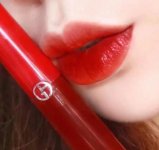一、光敏性化妆品能照灯吗?
光敏性化妆品不能照灯,放在避光阴凉处,照了灯或者见光容易变质,失去原有的效果
二、光敏剂如何有光敏性?
光敏剂又称增感剂、敏化剂,是指在光化学反应中,把光能转移到一些对可见光不敏感的反应物上以提高或扩大其感光性能的物质。光敏剂须满足下述条件:
(1)自己能首先被光照射激活。
(2)在体系中有足够的浓度,且能吸收足够量的光子。
(3)必须能把自己的能量传递给反应物。光敏试剂一般是芳香族酮类和安息香醚类,如苯甲酮、安息香二甲醚等。
三、薰衣草光敏性
薰衣草光敏性 - 缓解敏感肌肤的自然良方
薰衣草作为一种被广泛应用于皮肤护理和芳香疗法的植物,具有令人难以置信的功效。它不仅可以帮助减轻压力和焦虑,还可以用于治疗灼伤、创伤和炎症。但是,薰衣草对于一些人来说可能会导致光敏性反应,这是一种对阳光或紫外线过敏的现象。在本文中,我们将详细了解薰衣草光敏性以及如何使用薰衣草产品缓解敏感肌肤。
薰衣草光敏性的原因
薰衣草光敏性是指在接触薰衣草产品后,皮肤对阳光或紫外线产生过敏反应的情况。这可能导致皮肤发红、发痒、烧灼感或甚至水泡和皮疹的出现。尽管薰衣草油在许多情况下对皮肤具有益处,但某些人的肌肤可能对其中的某些成分更为敏感。
主要原因之一是薰衣草油中的某些成分能够与阳光中的紫外线相互作用,引发过敏反应。其中最常见的是光敏感性化合物,如柠檬醛和香茅醇。这些化合物在暴露于阳光下时会引起皮肤发炎和损伤。
如何避免薰衣草光敏性反应
如果你是光敏性肤质或过敏性肌肤,那么在使用薰衣草产品时需要格外小心。以下是一些建议,可以帮助你避免薰衣草光敏性反应:
- 注意产品的成分:在购买薰衣草产品时,仔细阅读产品标签,尤其是关于成分的部分。选择不含光敏化合物的产品,以降低引发过敏反应的风险。
- 进行敏感性测试:在使用薰衣草产品前,先在手臂或颈部的小面积皮肤上进行敏感性测试。将少量产品涂抹在皮肤上,观察是否出现任何不良反应,如红肿、发痒或刺痛等。
- 避免阳光暴晒:如果你知道自己对薰衣草产品敏感,尽量避免在阳光强烈的时候使用这些产品。使用防晒霜或遮阳工具,以降低光敏性反应的发生。
- 适量使用产品:尽量避免过度使用薰衣草产品,以减少对皮肤的刺激和潜在的光敏性反应。
薰衣草产品的选择与使用
对于敏感肌肤的人来说,选择合适的薰衣草产品是至关重要的。以下是一些建议,可以帮助你选择和正确使用薰衣草产品:
- 选择天然有机产品:优先选择使用天然和有机成分制成的薰衣草产品。这些产品通常不含过多的化学成分,对敏感肌肤更为温和。
- 使用稀释的薰衣草油:对于敏感肌肤来说,使用稀释的薰衣草油可能更为安全。将几滴薰衣草油稀释在基础载体油中,如椰子油或橄榄油,以降低对皮肤的刺激性。
- 避免长时间使用浓缩薰衣草精油:浓缩的薰衣草精油含有更高浓度的光敏性化合物,对敏感肌肤的刺激更大。如果你决定使用薰衣草精油,请确保适度稀释,并避免持续使用。
- 使用护肤品前进行测试:无论是薰衣草面霜、洗面奶还是面膜,都建议在使用新产品前进行敏感性测试。将少量产品涂抹于耳后或手腕的小面积皮肤上,等待24小时以确定是否会引发不良反应。
总之,薰衣草在其纯净的形式下对大多数肌肤都具有美好的效果。然而,对于光敏性皮肤的人来说,必须格外小心。选择适合自己肌肤类型的产品,并进行适当的测试,以确保安全使用薰衣草产品。如果你发现任何不适或不良反应,请立即停止使用,并咨询专业医生或皮肤护理专家的建议。
保持肌肤的健康和美丽,享受薰衣草带来的舒缓与宁静!
Translation:Lavender Photosensitivity - A Natural Remedy to Soothe Sensitive Skin
Lavender, as a plant widely used in skincare and aromatherapy, boasts incredible benefits. It not only helps alleviate stress and anxiety but also aids in healing burns, wounds, and inflammation. However, lavender may cause photosensitivity reactions in some individuals. Photosensitivity refers to an allergy or sensitivity to sunlight or UV rays. In this article, we will delve into the details of lavender photosensitivity and how to use lavender products to alleviate sensitive skin.
The Causes of Lavender Photosensitivity
Lavender photosensitivity occurs when the skin reacts to sunlight or UV rays after contact with lavender products. This can result in skin redness, itchiness, burning sensations, or even the appearance of blisters and rashes. Although lavender oil is beneficial for the skin in many cases, some individuals may be more sensitive to certain components of lavender.
One of the main causes is certain compounds found in lavender oil that can interact with UV rays from the sun, triggering an allergic reaction. The most common compounds responsible for photosensitivity are citral and geraniol. These compounds can cause inflammation and damage to the skin when exposed to sunlight.
How to Avoid Lavender Photosensitivity Reactions
If you have photosensitive or sensitive skin, extra caution is necessary when using lavender products. Here are some tips to help you avoid lavender photosensitivity reactions:
- Pay attention to the ingredients: When purchasing lavender products, carefully read the labels, especially the ingredient lists. Opt for products that do not contain photosensitizing compounds to reduce the risk of allergic reactions.
- Conduct sensitivity testing: Before using lavender products, perform a patch test on a small area of skin, such as the forearm or neck. Apply a small amount of the product and observe for any adverse reactions, such as redness, swelling, itching, or stinging.
- Avoid sun exposure: If you know that you are sensitive to lavender products, try to avoid using them during periods of intense sunlight. Use sunscreen or protective clothing to reduce the occurrence of photosensitivity reactions.
- Use products in moderation: Avoid excessive use of lavender products to minimize skin irritation and potential photosensitivity reactions.
Choosing and Using Lavender Products
For those with sensitive skin, it is crucial to select suitable lavender products. Here are some recommendations to help you choose and use lavender products correctly:
- Choose natural and organic products: Prioritize lavender products made with natural and organic ingredients. These products usually contain fewer chemical substances, making them gentler for sensitive skin.
- Use diluted lavender oil: For sensitive skin, using diluted lavender oil may be safer. Dilute a few drops of lavender oil in a carrier oil such as coconut oil or olive oil to reduce its potential irritability on the skin.
- Avoid prolonged use of concentrated lavender essential oil: Concentrated lavender essential oil contains higher levels of photosensitizing compounds, which can be more irritating to sensitive skin. If you decide to use lavender essential oil, ensure proper dilution and avoid prolonged use.
- Perform tests before using skincare products: Whether it's lavender cream, facial cleanser, or face mask, it is advisable to conduct a sensitivity test before using a new product. Apply a small amount of the product on a small area of skin behind the ear or wrist and wait for 24 hours to determine if any adverse reactions occur.
In conclusion, lavender offers wonderful effects for most skin types in its purest form. However, extra care must be taken for photosensitive skin. Choose products suitable for your skin type and perform appropriate tests to ensure the safe use of lavender products. If you experience any discomfort or adverse reactions, discontinue use immediately and consult a healthcare professional or skincare expert for advice.
Maintain the health and beauty of your skin while enjoying the soothing and calming benefits of lavender!
四、光敏性植物排行?
光敏性植物可引起植物蔬菜-日光性皮炎。一般在发病前有进食大量光敏性蔬菜和日光暴露史,皮损一般发生于暴露部位,皮损境界清楚,是红斑、瘀斑、肿胀、水疱等,自觉痒痛。
常见的光敏性植物下面以蔬菜为例,排行是:灰菜、紫云英、雪菜、莴苣、茴香、芹菜、萝卜叶、菠菜、荞麦、香菜、红花草、油菜、芥菜、无花果、柑橘、柠檬、芒果、菠萝等。
五、半导体光敏性原理?
原理出自爱因斯坦的光电效应原理,即在高于某特定频率的电磁波照射下,某些物质内部的电子会被光子激发出来而形成电流,即光生电。
六、玉米属于光敏性食物?
玉米不是感光食物。
感光食物的英文名称是Photographic food,此类食物富含铜等金属元素,可直接或间接地增加与黑色素生成有关的物质的数量与活性,这类食物吃多了,会令肌肤更容易受到紫外线侵害而变黑或长斑。常见的感光食物有:柠檬、胡萝卜、木瓜、芹菜、莴苣、土豆、香菜、苋菜、油菜、橘子、紫菜、田螺、菠菜、无花果,九层塔、韭菜、红豆
七、花生是不是光敏性?
花生属于。花生他确实属于一种光敏性食物,首先他光线好聚光的话花生成长非常快。大多数坚果不是光敏性的食物。但是,很多绿色绿叶蔬菜和水果是光敏性的食物。例如菠菜,芹菜,苋菜,芒果等。吃了光敏性的食物,不一定会出现过敏反应,主要看你的机体免疫功能的问题。
八、什么是光敏性物质?
所谓光敏性物质,就是指善于吸收日光中的长波紫外线的物质。光敏物质是光毒反应和光敏反应的帮凶,它们能诱发或激发光反应。对大多数人来说,完全不晒太阳不大可能,但尽量少晒太阳是不难做到的。可是,一旦沾上光敏物质,即使是一般的接触日光,也可能发生反应,甚至强烈反应。天生光过敏者为数不多,而因光敏物质引发的光反应却很常见。为了保护皮肤不患光反应病,应该知道哪些是光敏物质。曾有过光敏病史者、过敏体质者、近期内户外活动频繁者,要更加警惕,尽量不接触、不服用或食用已知光敏物质。
它分内源性(如卟啉)和外源性(如某些食物、某些药物等)。
具有光敏性的食物有:香菜、芹菜、油菜、菠菜、灰菜、雪菜、莴苣、胡萝卜、香椿、茴香、马齿笕、荞麦、无花果、槐花、柠檬、干木耳、黄泥螺、皮皮虾、螃蟹等,如果大量进食,又晒太阳,就会发生蔬菜日光性皮疹、水果日光性皮疹、黄泥螺日光性皮疹。
光敏性药物有:氯丙嗪、异丙嗪、氯噻嗪、氢氯噻嗪、四环素类药物、诺氟沙星(氟哌酸)、洛美沙星、司帕沙星、依诺沙星、磺胺药、灰黄霉素、口服降糖药、复方降压片、萘啶酸等;含有光敏性物质的中药有:防风、荆芥、独活、白芷、芸香、补骨脂等。口服这些药物后要注意避光,否则可能会引起光敏反应。
其它:食品添加剂、防腐剂、漂白剂、清洁剂、化妆品、染料、蒽林、焦油、沥青、啶、卤代水酰苯胺、葵子麝香和甲基香豆素等。
九、光敏性食物有那些?
光敏性食物有蔬菜、水果、海鲜等,具体如下:
1、蔬菜:灰菜、紫云英、雪菜、莴苣、茴香、苋莱、荠菜、芹菜、萝卜叶、菠菜、荞麦、香菜、红花草、油菜、芥菜等。
2、水果:无花果、柑橘、柠檬、芒果、菠萝等。
3、海鲜:田螺、大虾、螃蟹、花蛤、清蛤等。
十、光敏性指的是什么?
光敏性
光敏性是电阻由于光照导致其自身电阻阻值改变的性质。
介绍
光敏性应该是电阻由于光照导致其自身电阻阻值改变的性质。
测定光敏性的试验是将不同强度的光照射到导体电阻上,然后利用电流表和电压表近似的测出电阻的相应阻值,并纪录下试验数据(包括光强和阻值),然后利用公式计算出光敏系数。
在精油的日常使用里是指:某些精油中的物质会使皮肤对于紫外线的敏感度增加或产生过敏,但如果将这类精油稀释到2%以下,光敏性就会降低。例如{佛手柑(Citrus bergamia)、柠檬(Citrus limon)、苦柳橙(Citrus aurantium var. amara)、橘(Citrus reticulata)、莱姆(Citrus aurantifolia)}等。
- 相关评论
- 我要评论
-

 78
78 2023-11-05 03:53
2023-11-05 03:53 admin
admin